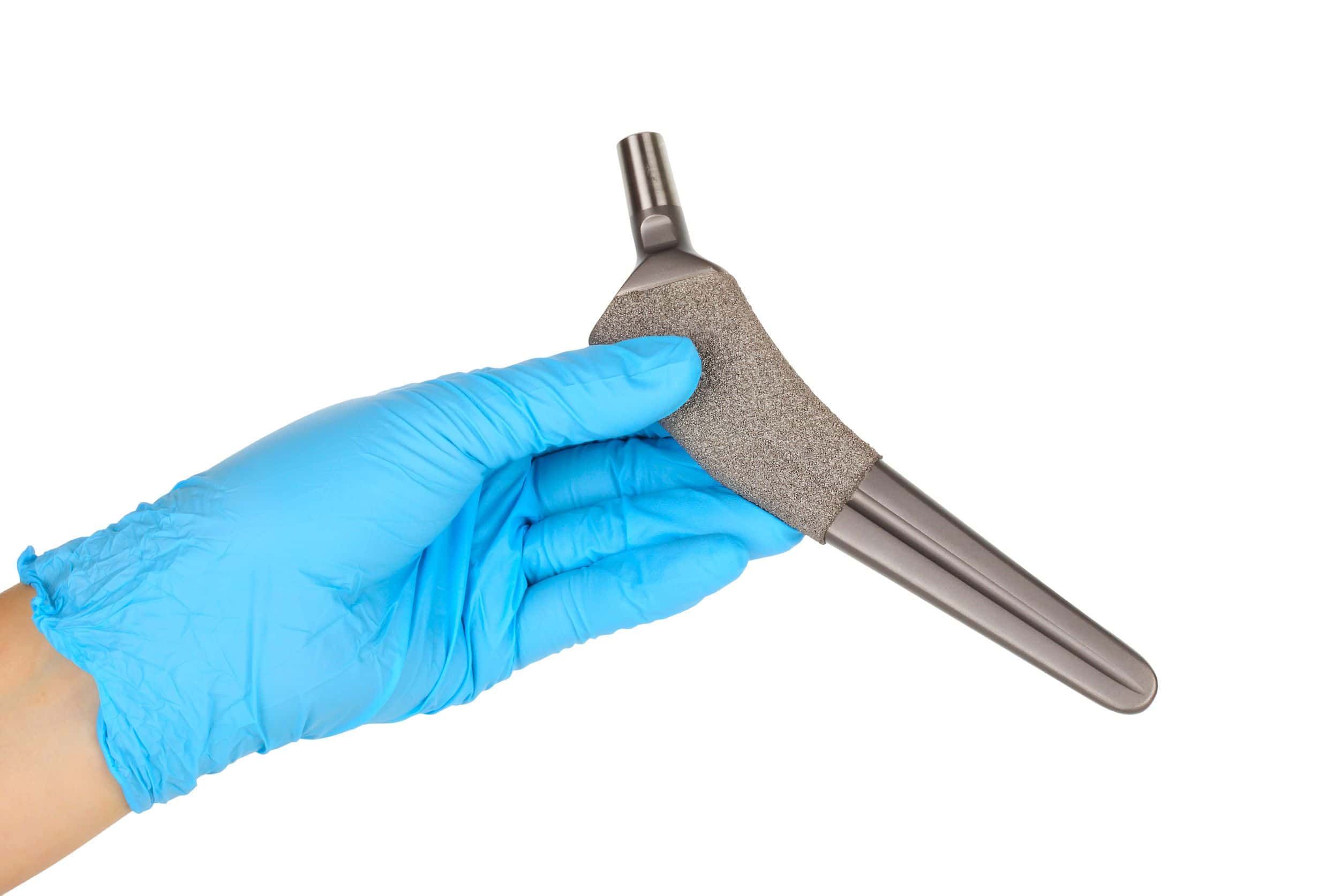Woman Claims Hip Replacement Deposited Metals, Forced Revision Surgery
Updated on
Plaintiff based in Utah underwent two total hip replacements with metal-on-metal hips, over the course of seven months. Three years later, cobalt and chromium was detected in her blood system, and fluid consistent with metallosis was located in the vicinity of her left hip. She underwent repeated revision surgeries. She alleges that she suffered substantial necrosis of the muscles located in her left buttocks and hip area because of the metallosis. She has no effective muscular control in her left hip area and cannot ambulate normally without assistance. Similarly, her right hip replacement failed, and plaintiff underwent revision surgery.
She asserts that the defendant manufacturers were on notice of the potential for unusual, premature or increased friction and/or wear and tear, and premature failure before her first surgery but failed to warn her surgeon.
Question(s) For Expert Witness
1.) Was testing sufficient to determine whether plaintiff’s hip replacement caused particle deposits?
2.) Are plaintiff’s experts’ opinions reliable?
Expert Witness Response
 In plaintiff’s case, the medical probability is that wear due to excessive anteversion/cup positioning of the primary total hip replacement hardware and subsequent revision arthroplasties resulted in large amounts of wear particles, furthering the inflammatory response present within her arthritic joints. Unfortunately, the lack of submission of tissue resected at revision arthroplasty surgeries for pathologic examination precludes the possibility of a meaningful histologic examination and correlation with the clinical findings, which are not unique to metal-on-metal bearings, but are present with other bearing combinations as well. Only after repeated revisions, removal of the bearing and treatment with antibiotics was a small amount of tissue submitted to for pathologic examination.
In plaintiff’s case, the medical probability is that wear due to excessive anteversion/cup positioning of the primary total hip replacement hardware and subsequent revision arthroplasties resulted in large amounts of wear particles, furthering the inflammatory response present within her arthritic joints. Unfortunately, the lack of submission of tissue resected at revision arthroplasty surgeries for pathologic examination precludes the possibility of a meaningful histologic examination and correlation with the clinical findings, which are not unique to metal-on-metal bearings, but are present with other bearing combinations as well. Only after repeated revisions, removal of the bearing and treatment with antibiotics was a small amount of tissue submitted to for pathologic examination.
 I have reviewed plaintiff’s expert’s report of his interpretation of the pathology findings from the plaintiff. He has grossly misinterpreted the findings present on this single pathology slide. As can be seen from my brief description of the histologic findings, I find no significant inflammation, no definitive metal debris, and no necrosis. The pathology material present is mainly dense fibrous tissue with only scattered chronic inflammation, as well as fibrin. When I realized how discrepant our interpretations were, I initially wondered if I had in fact reviewed the same material. I confirmed that indeed I had reviewed the same case as per the label affixed to the slide and the corresponding pathology report. I then wondered if perhaps he had made a technical error as it appears from the text of his report that he had copied and pasted the histologic description and interpretation he provided in a related case (belonging to a different patient) that I also reviewed. Only when I viewed the low power image and labeled histologic map that he embedded in his report was I confident that he was in fact commenting on this same slide.
I have reviewed plaintiff’s expert’s report of his interpretation of the pathology findings from the plaintiff. He has grossly misinterpreted the findings present on this single pathology slide. As can be seen from my brief description of the histologic findings, I find no significant inflammation, no definitive metal debris, and no necrosis. The pathology material present is mainly dense fibrous tissue with only scattered chronic inflammation, as well as fibrin. When I realized how discrepant our interpretations were, I initially wondered if I had in fact reviewed the same material. I confirmed that indeed I had reviewed the same case as per the label affixed to the slide and the corresponding pathology report. I then wondered if perhaps he had made a technical error as it appears from the text of his report that he had copied and pasted the histologic description and interpretation he provided in a related case (belonging to a different patient) that I also reviewed. Only when I viewed the low power image and labeled histologic map that he embedded in his report was I confident that he was in fact commenting on this same slide.
 Because of my incredulity at his interpretation, I have looked at this slide several times to try to reconcile the differences in interpretation. The only feature we are in agreement on is that there is extensive fibrosis. He states that there is extensive necrosis. In fact there is no identifiable necrosis. What he is calling necrosis is actually fibrin, which is not the same as necrosis. He states that the fibrous tissue is bordered by metal-laden macrophages. I have looked very carefully at the portion of the slide corresponding to the area he labels as macrophages and can state that it is difficult to definitively identify any macrophages at all, much less any laden with metal. The subsequent two lines describing in detail these macrophages appear to have been copied and pasted directly from a related case that I also reviewed, and do not reflect any histologic findings actually present on the slide at issue. I recognize the subsequent paragraph referring to the composite images which also appears to have been incompletely copied and pasted from the related case. The supplied findings do not reflect the histology actually present on the slide.
Because of my incredulity at his interpretation, I have looked at this slide several times to try to reconcile the differences in interpretation. The only feature we are in agreement on is that there is extensive fibrosis. He states that there is extensive necrosis. In fact there is no identifiable necrosis. What he is calling necrosis is actually fibrin, which is not the same as necrosis. He states that the fibrous tissue is bordered by metal-laden macrophages. I have looked very carefully at the portion of the slide corresponding to the area he labels as macrophages and can state that it is difficult to definitively identify any macrophages at all, much less any laden with metal. The subsequent two lines describing in detail these macrophages appear to have been copied and pasted directly from a related case that I also reviewed, and do not reflect any histologic findings actually present on the slide at issue. I recognize the subsequent paragraph referring to the composite images which also appears to have been incompletely copied and pasted from the related case. The supplied findings do not reflect the histology actually present on the slide.
 As an orthopedic pathologist, I read with interest the deposition of plaintiff’s orthopedic surgeon. For reasons that are unclear to me, he elected not to send tissue he excised from 5 different surgeries for pathologic examination. As a result, it is not possible to determine whether his speculation that plaintiff was having “an adverse response to her metal-on-metal hip” is scientifically accurate. As a pathologist I have regularly encountered experienced surgeons (or pathologists for that matter) forming an impression based on a gross observation of tissue that proves not correct upon histologic examination. Without microscopic examination of the tissue, no scientifically reliable assessment can be made. Indeed, it is exactly because such gross visual characterizations are not reliable that samples are routinely sent to the pathologist to examine carefully with a microscope.
As an orthopedic pathologist, I read with interest the deposition of plaintiff’s orthopedic surgeon. For reasons that are unclear to me, he elected not to send tissue he excised from 5 different surgeries for pathologic examination. As a result, it is not possible to determine whether his speculation that plaintiff was having “an adverse response to her metal-on-metal hip” is scientifically accurate. As a pathologist I have regularly encountered experienced surgeons (or pathologists for that matter) forming an impression based on a gross observation of tissue that proves not correct upon histologic examination. Without microscopic examination of the tissue, no scientifically reliable assessment can be made. Indeed, it is exactly because such gross visual characterizations are not reliable that samples are routinely sent to the pathologist to examine carefully with a microscope.
 The expert has been a pathologist for more than 20 years and is a professor at a medical university.
The expert has been a pathologist for more than 20 years and is a professor at a medical university.
Subscribe to our newsletter
Join our newsletter to stay up to date on legal news, insights and product updates from Expert Institute.
Sign up nowFind an expert witness near you
What State is your case in?
Subscribe to our newsletter
Join our newsletter to stay up to date on legal news, insights and product updates from Expert Institute.


